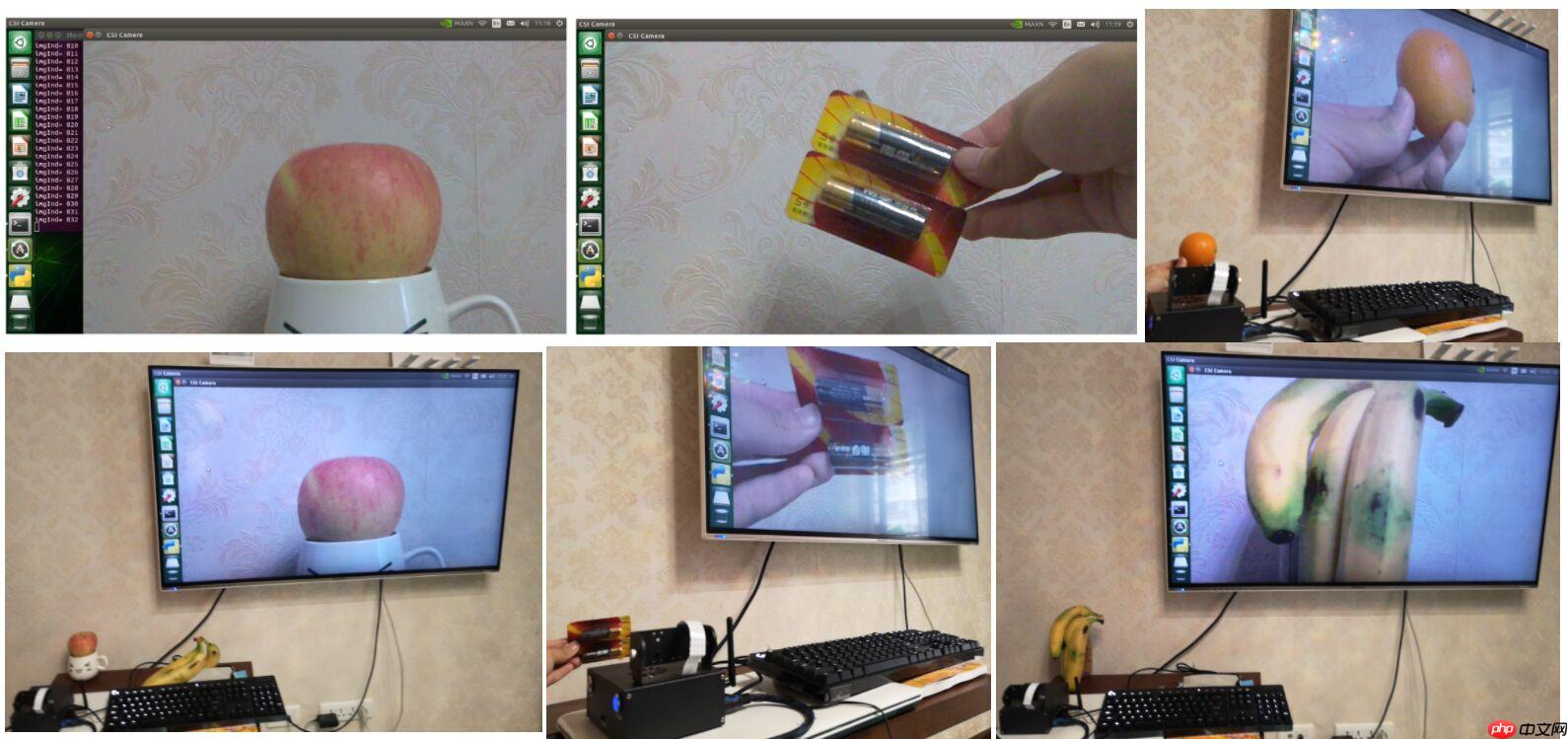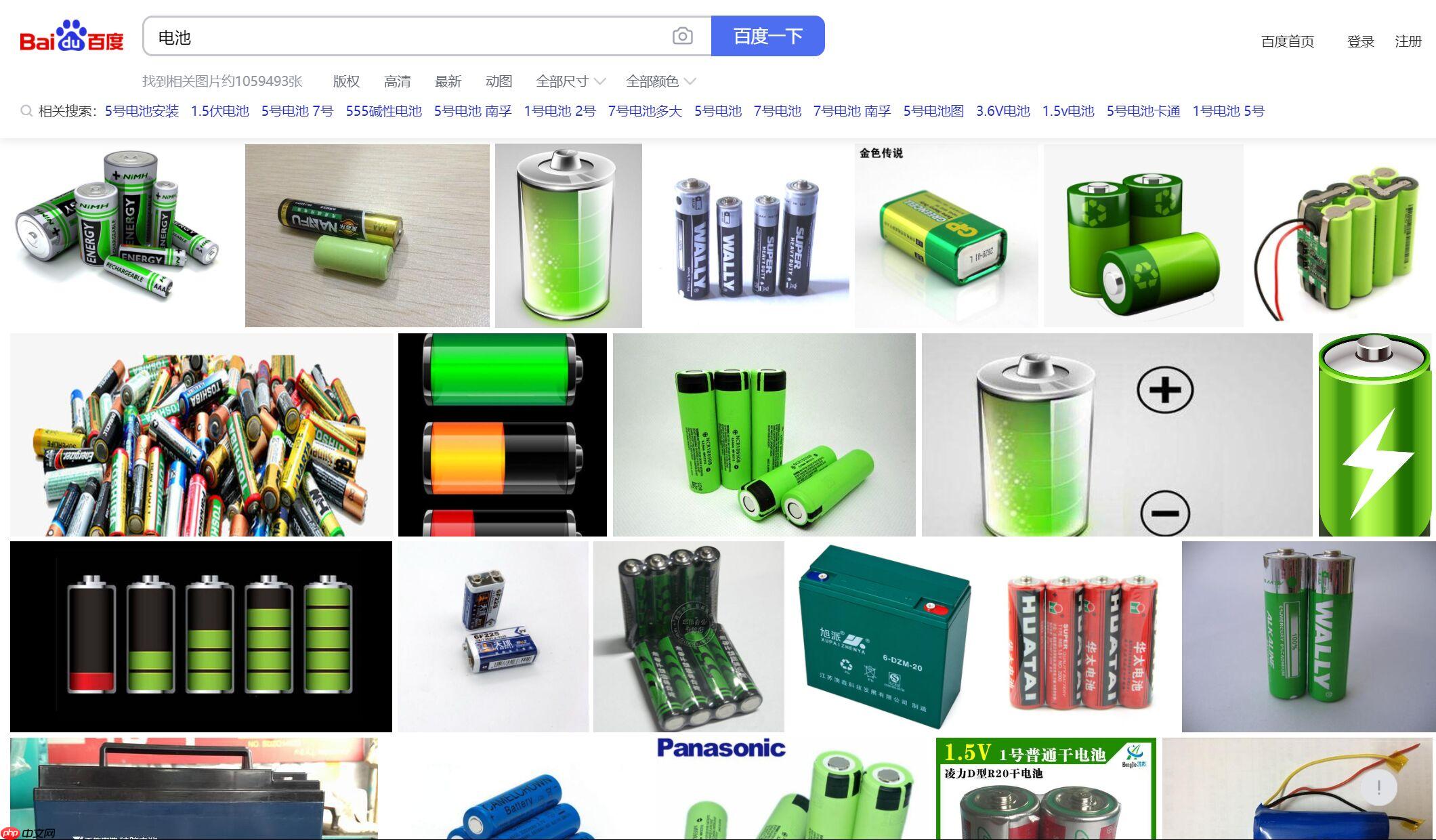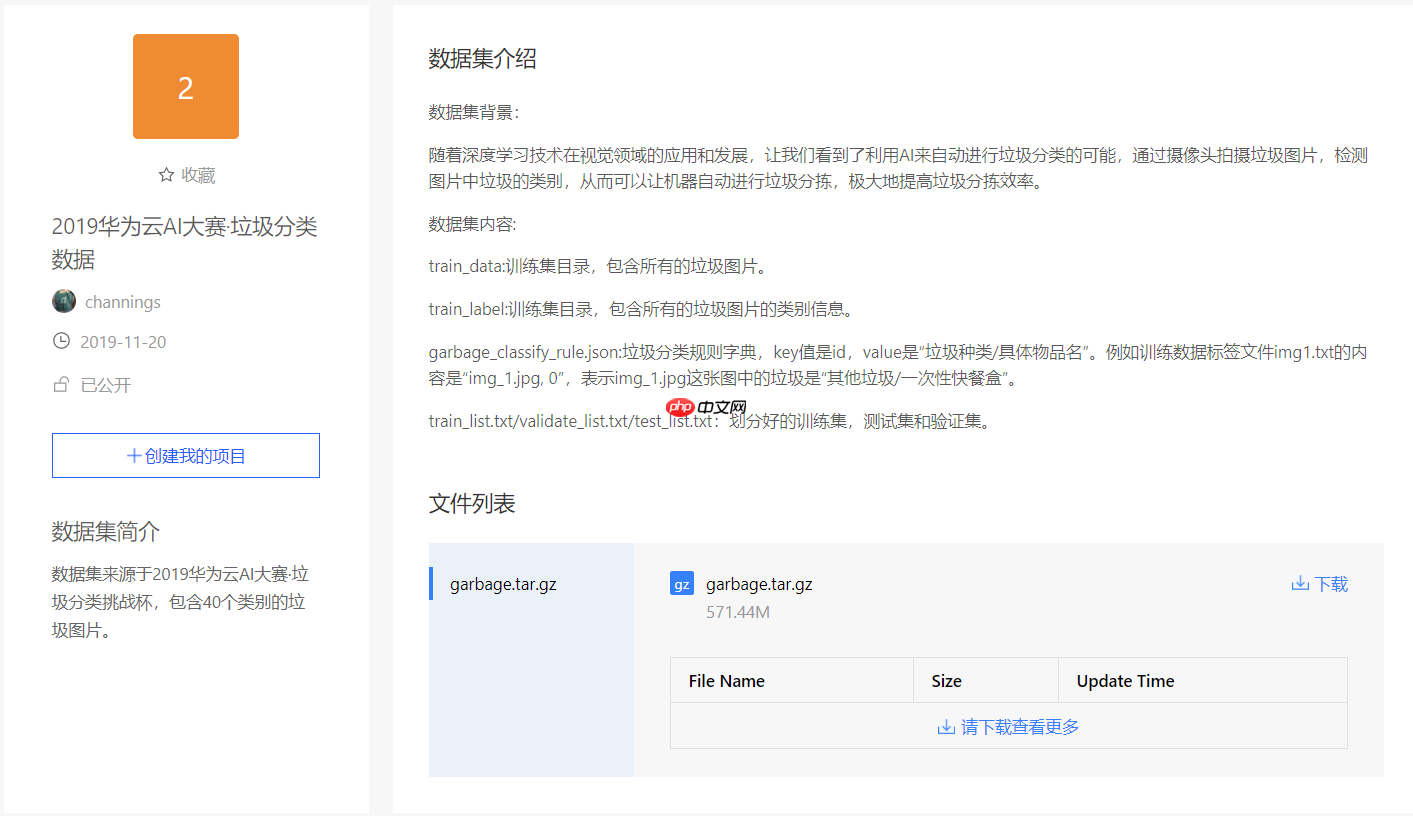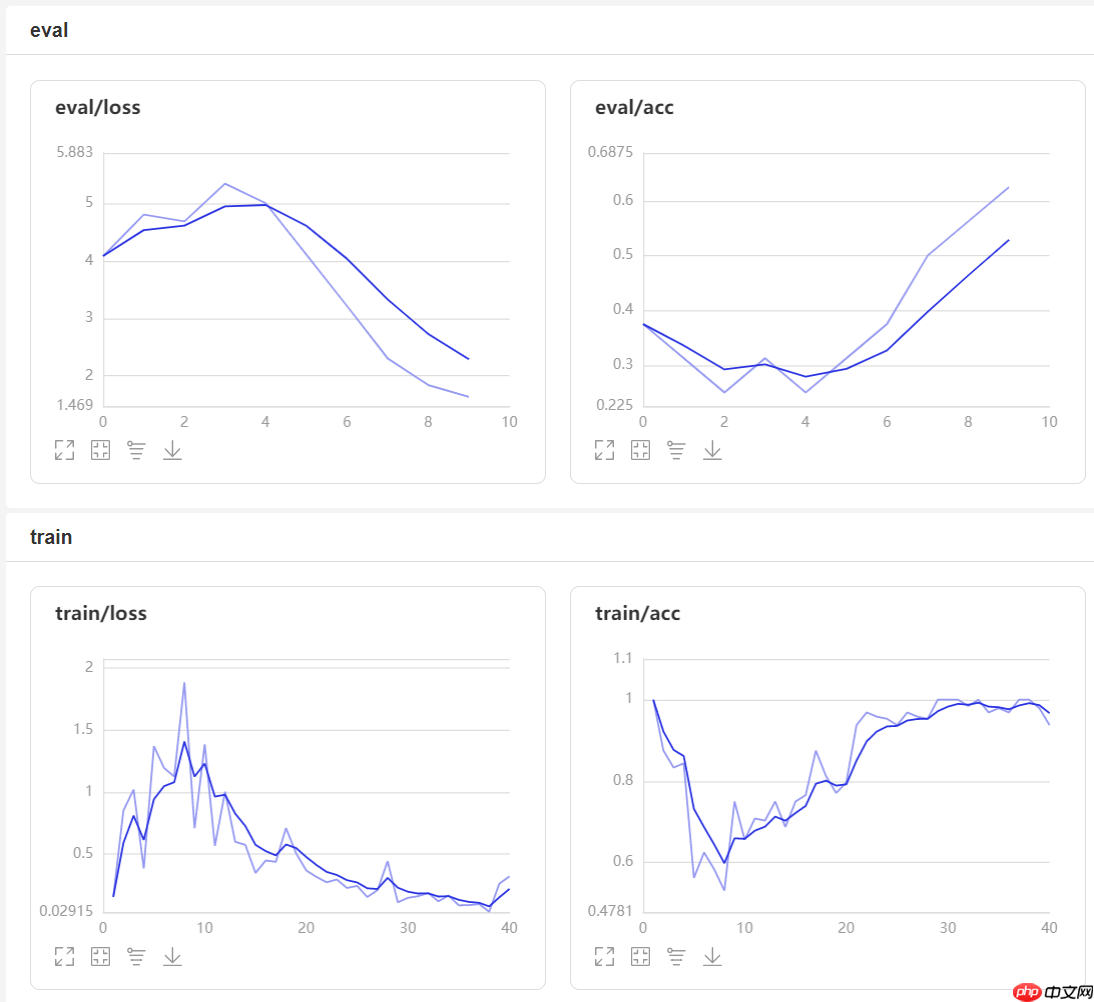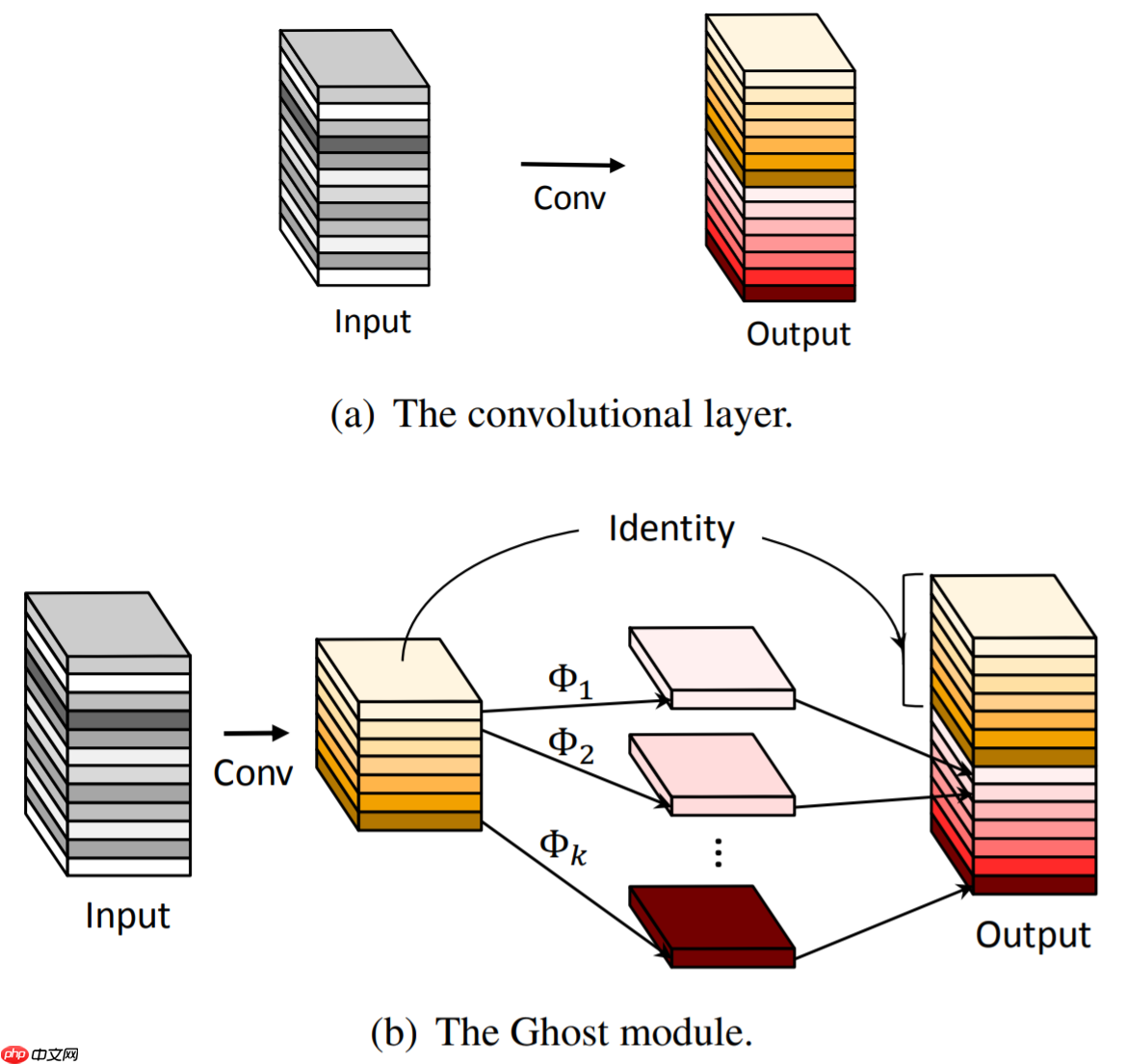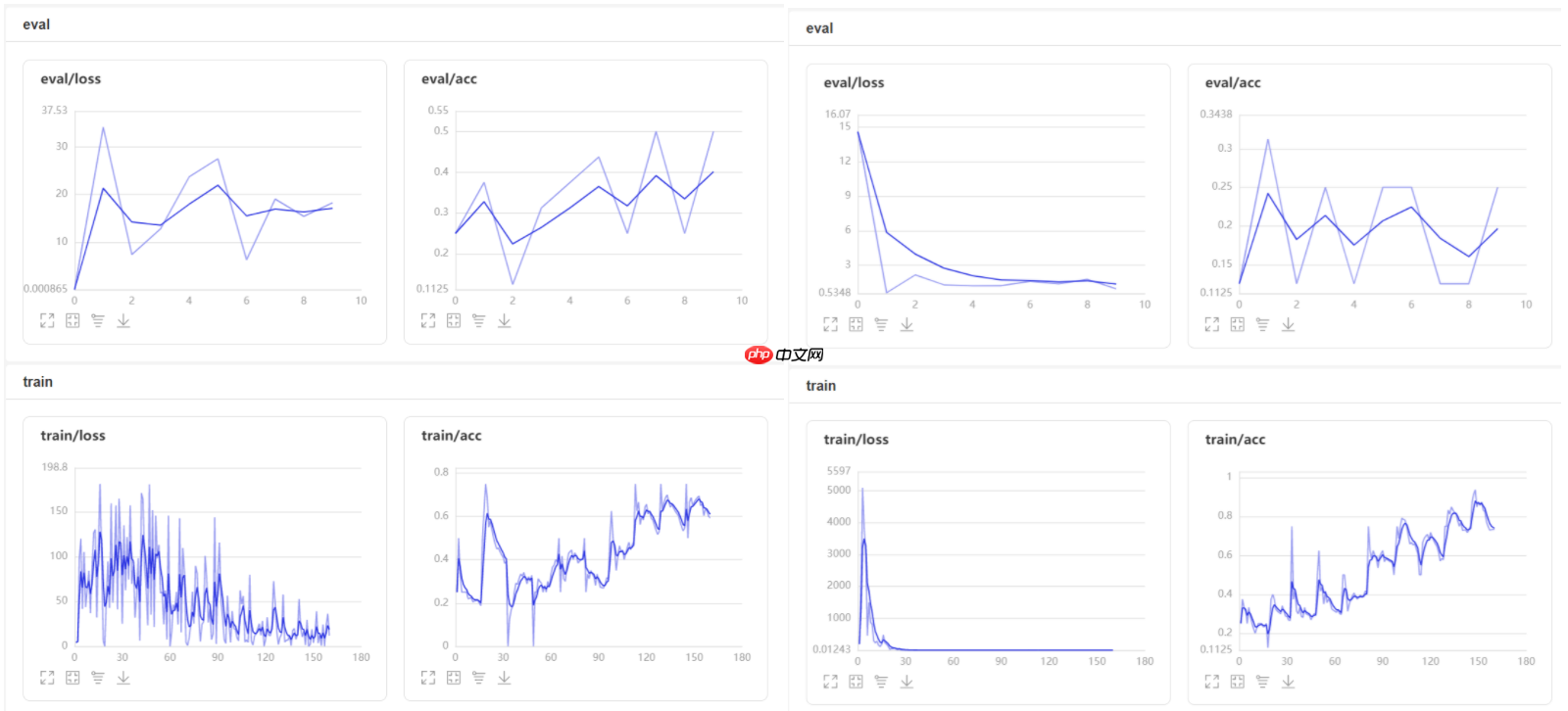基于Ghost Module的生活垃圾智能分类算法
时间:2025-07-23 | 作者: | 阅读:0本文围绕第七届全国大学生工程训练综合能力竞赛“智能+”赛道生活垃圾智能分类任务,设计基于Ghost Module的分类算法。通过多途径采集数据,经处理后,分别用MobileNetV2测试,复现Ghost Module并构建Ghost-VGG-11,对比其与VGG-11性能,为垃圾分类装置提供算法支持。
基于Ghost Module的生活垃圾智能分类算法
第七届全国大学生工程训练综合能力竞赛“智能+”赛道之生活垃圾智能分类解决方案
一、赛题讲解
以日常生活垃圾分类为主题,自主设计并制作一 台根据给定任务完成生活垃圾智能分类的装置。该装置能够实现对投入的“可回收垃圾、厨余垃圾、有害垃圾和其他垃圾”等四类城市生活垃圾具有自主判别、分类、投放到相应的垃圾桶、满载报警、播放垃圾分类宣传片等功能。
垃圾的种类
待生活垃圾智能分类装置识别的四类垃圾主要包括:
- 有害垃圾:电池(1号、2号、5号) ;
- 可回收垃圾:易拉罐、小号矿泉水瓶;
- 厨余垃圾:完整或切割过的水果、蔬菜;
- 其他垃圾:砖瓦陶瓷、烟头等。
二、数据采集
1. 自购硬件采集
使用英伟达的Jetson Nano以及树莓派摄像头采集数据。
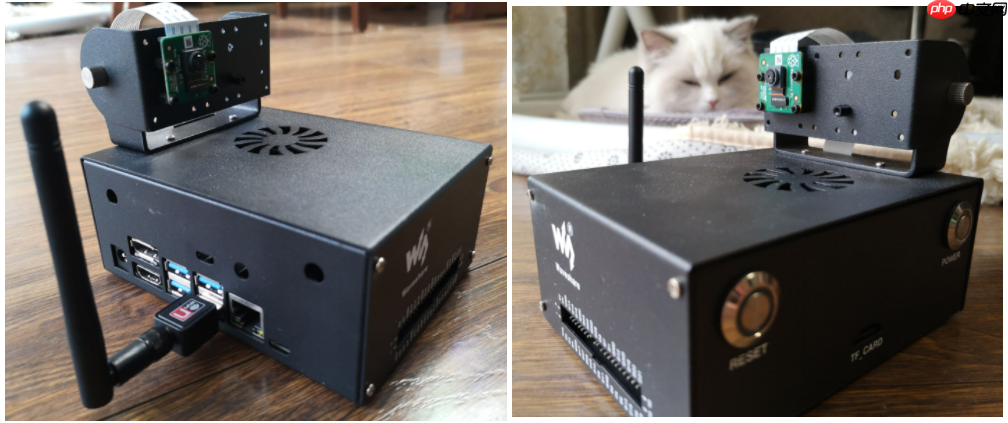
- Jetson Nano初体验之写入官方Ubuntu镜像
- Jetson Nano初体验之实现人脸检测(内含更换默认镜像源的方法)
使用openCV保存图片
以下代码请在Jetson Nano上运行:
import osimport cv2import numpy as npimport timepath = os.path.split(os.path.realpath(__file__))[0]save_name=”img“def mkdir(path): if not os.path.exists(path): os.makedirs(path) print(”----- new folder -----“) else: print('----- there is this folder -----')def gstreamer_pipeline( capture_width=1280, capture_height=720, display_width=1280, display_height=720, framerate=60, flip_method=0,): return ( ”nvarguscamerasrc ! “ ”video/x-raw(memory:NVMM), “ ”width=(int)%d, height=(int)%d, “ ”format=(string)NV12, framerate=(fraction)%d/1 ! “ ”nvvidconv flip-method=%d ! “ ”video/x-raw, width=(int)%d, height=(int)%d, format=(string)BGRx ! “ ”videoconvert ! “ ”video/x-raw, format=(string)BGR ! appsink“ % ( capture_width, capture_height, framerate, flip_method, display_width, display_height, ) )def save_image_process(): mkdir(path+”/garbagedata“) mkdir(path+”/garbagedata/“+save_name) print(gstreamer_pipeline(flip_method=0)) cap = cv2.VideoCapture(gstreamer_pipeline(flip_method=0), cv2.CAP_GSTREAMER) if cap.isOpened(): window_handle = cv2.namedWindow(”CSI Camera“, cv2.WINDOW_AUTOSIZE) imgInd = 0 # Window while cv2.getWindowProperty(”CSI Camera“, 0) >= 0: ret_val, img = cap.read() cv2.imshow(”CSI Camera“, img) cv2.imwrite(path+”/garbagedata/“+save_name+”/{}.jpg“.format(imgInd), img) print(”imgInd=“,imgInd) imgInd+=1 time.sleep(0.5) # This also acts as keyCode = cv2.waitKey(30) & 0xFF # Stop the program on the ESC key if keyCode == 27: break cap.release() cv2.destroyAllWindows() else: print(”Unable to open camera“)if __name__ == '__main__': save_image_process()登录后复制 ? ? ? ?
执行界面如图所示:
? ? ? ?2. 网络爬虫采集
从百度上能搜到很多图片,好好利用就能得到不少数据,但也会爬到一些脏数据,需要把这些脏数据去除。
? ? ? ?爬虫的代码在网上一搜就有,下面是我使用的代码:
In [?]# 安装必要的库!pip install bs4登录后复制 ? ? ? ?
Looking in indexes: https://mirror.baidu.com/pypi/simple/Collecting bs4 Downloading https://mirror.baidu.com/pypi/packages/10/ed/7e8b97591f6f456174139ec089c769f89a94a1a4025fe967691de971f314/bs4-0.0.1.tar.gzCollecting beautifulsoup4 (from bs4) Downloading https://mirror.baidu.com/pypi/packages/d1/41/e6495bd7d3781cee623ce23ea6ac73282a373088fcd0ddc809a047b18eae/beautifulsoup4-4.9.3-py3-none-any.whl (115kB) |████████████████████████████████| 122kB 11.6MB/s eta 0:00:01Collecting soupsieve>1.2; python_version >= ”3.0“ (from beautifulsoup4->bs4) Downloading https://mirror.baidu.com/pypi/packages/02/fb/1c65691a9aeb7bd6ac2aa505b84cb8b49ac29c976411c6ab3659425e045f/soupsieve-2.1-py3-none-any.whlBuilding wheels for collected packages: bs4 Building wheel for bs4 (setup.py) ... done Created wheel for bs4: filename=bs4-0.0.1-cp37-none-any.whl size=1273 sha256=1772c487d510a09bde26399526ab8e320c10db8c3c0b75caf5268c67fc816829 Stored in directory: /home/aistudio/.cache/pip/wheels/80/e7/37/62c60fe0c1017a55e897489ce5d5e850fa5610745d6352ed0cSuccessfully built bs4Installing collected packages: soupsieve, beautifulsoup4, bs4Successfully installed beautifulsoup4-4.9.3 bs4-0.0.1 soupsieve-2.1登录后复制 ? ? ? ?In [?]
# 爬虫代码,运行后根据提示输入即可import reimport requestsfrom urllib import errorfrom bs4 import BeautifulSoup import os num = 0numPicture = 0file = ''List = [] def Find(url, A): global List print('正在检测图片总数,请稍等.....') t = 0 i = 1 s = 0 while t < 1000: Url = url + str(t) try: # 这里搞了下 Result = A.get(Url, timeout=7, allow_redirects=False) except BaseException: t = t + 60 continue else: result = Result.text pic_url = re.findall('”objURL“:”(.*?)“,', result, re.S) # 先利用正则表达式找到图片url s += len(pic_url) if len(pic_url) == 0: break else: List.append(pic_url) t = t + 60 return s def recommend(url): Re = [] try: html = requests.get(url, allow_redirects=False) except error.HTTPError as e: return else: html.encoding = 'utf-8' bsObj = BeautifulSoup(html.text, 'html.parser') div = bsObj.find('div', id='topRS') if div is not None: listA = div.findAll('a') for i in listA: if i is not None: Re.append(i.get_text()) return Re def dowmloadPicture(html, keyword): global num # t =0 pic_url = re.findall('”objURL“:”(.*?)“,', html, re.S) # 先利用正则表达式找到图片url print('找到关键词:' + keyword + '的图片,即将开始下载图片...') for each in pic_url: print('正在下载第' + str(num + 1) + '张图片,图片地址:' + str(each)) try: if each is not None: pic = requests.get(each, timeout=7) else: continue except BaseException: print('错误,当前图片无法下载') continue else: string = file + r'/' + keyword + '_' + str(num) + '.jpg' fp = open(string, 'wb') fp.write(pic.content) fp.close() num += 1 if num >= numPicture: return if __name__ == '__main__': # 主函数入口 headers = { 'Accept-Language': 'zh-CN,zh;q=0.8,zh-TW;q=0.7,zh-HK;q=0.5,en-US;q=0.3,en;q=0.2', 'Connection': 'keep-alive', 'User-Agent': 'Mozilla/5.0 (X11; Linux x86_64; rv:60.0) Gecko/20100101 Firefox/60.0', 'Upgrade-Insecure-Requests': '1' } A = requests.Session() A.headers = headers word = input(”请输入搜索关键词(可以是人名,地名等): “) # add = 'http://image.baidu.com/search/flip?tn=baiduimage&ie=utf-8&word=%E5%BC%A0%E5%A4%A9%E7%88%B1&pn=120' url = 'https://image.baidu.com/search/flip?tn=baiduimage&ie=utf-8&word=' + word + '&pn=' # 这里搞了下 tot = Find(url, A) Recommend = recommend(url) # 记录相关推荐 print('经过检测%s类图片共有%d张' % (word, tot)) numPicture = int(input('请输入想要下载的图片数量 ')) file = input('请建立一个存储图片的文件夹,输入文件夹名称即可') y = os.path.exists(file) if y == 1: print('该文件已存在,请重新输入') file = input('请建立一个存储图片的文件夹,)输入文件夹名称即可') os.mkdir(file) else: os.mkdir(file) t = 0 tmp = url while t < numPicture: try: url = tmp + str(t) # 这里搞了下 result = A.get(url, timeout=10, allow_redirects=False) except error.HTTPError as e: print('网络错误,请调整网络后重试') t = t + 60 else: dowmloadPicture(result.text, word) t = t + 60 for re in Recommend: print(re, end=' ')登录后复制 ? ? ? ?
请输入搜索关键词(可以是人名,地名等): 正在检测图片总数,请稍等.....经过检测电池类图片共有1020张登录后复制 ? ? ? ?
请输入想要下载的图片数量登录后复制 ? ? ? ?
请建立一个存储图片的文件夹,输入文件夹名称即可找到关键词:电池的图片,即将开始下载图片...正在下载第1张图片,图片地址:https://gimg2.baidu.com/image_search/src=http%3A%2F%2Fwww.t-chs.com%2FtuhsJDEwLmFsaWNkbi5jb20vaTIvNjQ4Mzc4ODUyL1RCMnFkd1VjQzNQTDFKalNaRnRYWGNsUlZYYV8hITY0ODM3ODg1MiQ5.jpg&refer=http%3A%2F%2Fwww.t-chs.com&app=2002&size=f9999,10000&q=a80&n=0&g=0n&fmt=jpeg?sec=1613873211&t=ee9ac8cfae2ee7a4d45e9705450f4336正在下载第2张图片,图片地址:https://gimg2.baidu.com/image_search/src=http%3A%2F%2Fbpic.588ku.com%2Felement_origin_min_pic%2F16%2F10%2F09%2F2157fa405e95031.jpg&refer=http%3A%2F%2Fbpic.588ku.com&app=2002&size=f9999,10000&q=a80&n=0&g=0n&fmt=jpeg?sec=1613873211&t=9f70cb8588023c8ec7feff83a983cf73正在下载第3张图片,图片地址:https://gimg2.baidu.com/image_search/src=http%3A%2F%2Fimg002.file.rongbiz.cn%2Fuploadfile%2F201307%2F27%2F03%2F47-00-78837.jpg&refer=http%3A%2F%2Fimg002.file.rongbiz.cn&app=2002&size=f9999,10000&q=a80&n=0&g=0n&fmt=jpeg?sec=1613873211&t=e68ca1e77a9001d5300055cee4a1256e正在下载第4张图片,图片地址:https://gimg2.baidu.com/image_search/src=http%3A%2F%2Fimg.zcool.cn%2Fcommunity%2F012c8355410d64000001e71b39c9bc.jpg&refer=http%3A%2F%2Fimg.zcool.cn&app=2002&size=f9999,10000&q=a80&n=0&g=0n&fmt=jpeg?sec=1613873211&t=2988c68a74654217d4a1d656e8b8af8f正在下载第5张图片,图片地址:https://gimg2.baidu.com/image_search/src=http%3A%2F%2Fapp.materials.cn%2Fupload%2F201508%2F25%2F201508252324292728.jpg&refer=http%3A%2F%2Fapp.materials.cn&app=2002&size=f9999,10000&q=a80&n=0&g=0n&fmt=jpeg?sec=1613873211&t=5347da7d75564c1f2c14285a9dc4b8a8正在下载第6张图片,图片地址:https://gimg2.baidu.com/image_search/src=http%3A%2F%2Fgss0.baidu.com%2F-fo3dSag_xI4khGko9WTAnF6hhy%2Fzhidao%2Fpic%2Fitem%2Fc75c10385343fbf22c095080b27eca8065388f68.jpg&refer=http%3A%2F%2Fgss0.baidu.com&app=2002&size=f9999,10000&q=a80&n=0&g=0n&fmt=jpeg?sec=1613873211&t=70af3066ba1e81dcc4c4593d94ad4544正在下载第7张图片,图片地址:https://gimg2.baidu.com/image_search/src=http%3A%2F%2Fa3.att.hudong.com%2F55%2F43%2F20300000926969131235438195884.jpg&refer=http%3A%2F%2Fa3.att.hudong.com&app=2002&size=f9999,10000&q=a80&n=0&g=0n&fmt=jpeg?sec=1613873211&t=66fc0d23c0668735eb561bf40ea6d792正在下载第8张图片,图片地址:https://gimg2.baidu.com/image_search/src=http%3A%2F%2Fimg2.99114.com%2Fgroup1%2FM00%2FBD%2F2E%2FwKgGTFVDChCAa3rYAAMUd7nmdTU407.jpg&refer=http%3A%2F%2Fimg2.99114.com&app=2002&size=f9999,10000&q=a80&n=0&g=0n&fmt=jpeg?sec=1613873211&t=22a4c9ed53b9ef69d2bfae59c9b62379正在下载第9张图片,图片地址:https://gimg2.baidu.com/image_search/src=http%3A%2F%2Fwww.t-chs.com%2FtuhsJDEwLmFsaWNkbi5jb20vaTIvMTA2NTYwODQ2L1RCMjRjWWhmYkptcHVGalNaRndYWGFFNFZYYV8hITEwNjU2MDg0NiQ5.jpg&refer=http%3A%2F%2Fwww.t-chs.com&app=2002&size=f9999,10000&q=a80&n=0&g=0n&fmt=jpeg?sec=1613873211&t=8e0da807bd4d79867901e438cd5b947c正在下载第10张图片,图片地址:https://gimg2.baidu.com/image_search/src=http%3A%2F%2Fpic.51yuansu.com%2Fpic3%2Fcover%2F00%2F82%2F69%2F58c87a8a5e207_610.jpg&refer=http%3A%2F%2Fpic.51yuansu.com&app=2002&size=f9999,10000&q=a80&n=0&g=0n&fmt=jpeg?sec=1613873211&t=fd515ab8371594027bd108cd2602873b登录后复制 ? ? ? ?
3. 使用现有数据集
数据集来源于2019华为云AI大赛·垃圾分类挑战杯,包含40个类别的垃圾图片。将40个类别进行整理:
- 其他垃圾:一次性快餐盒、污损塑料、烟蒂、牙签、破碎花盆及碟碗、竹筷
- 厨余垃圾:剩饭剩菜、大骨头、水果果皮、水果果肉、茶叶渣、菜叶菜根、蛋壳、鱼骨",
- 可回收物:充电宝、包、化妆品瓶、塑料玩具、塑料碗盆、塑料衣架、快递纸袋、插头电线、旧衣服、易拉罐、枕头、毛绒玩具、洗发水瓶、玻璃杯、皮鞋、砧板、纸板箱、调料瓶、酒瓶、金属食品罐、锅、食用you桶、饮料瓶
- 有害垃圾:干电池、软膏、过期药物
数据集链接:https://aistudio.baidu.com/aistudio/datasetdetail/16284
? ?三、数据处理
数据的好坏在一定程度上决定了模型的好坏,为了提高模型的准确率,通常可以对数据集做以下处理:
- 去除脏数据:网络爬虫爬取的图片难免会有不相关的图片,应该去除
- 图像增强:通常使用图像增强让模型的拟合效果更好
- 生成式对抗网络:为了增加数据量,可以尝试使用生成式对抗网络扩充数据集
- 统一图像尺寸:树莓派摄像头拍摄出来的图片大小是1280 * 720,训练与预测时的图片大小一致有利于提高准确率
为了便于PaddlePaddle加载数据集,我们需要将图片整理成数据集:
- 统一命名与存储:为了便于在训练过程中加载并进一步处理数据,将图片放到同一文件夹下,并按“标签+序号”的方式命名
- 划分训练集和验证集:使用均匀随机抽样的方式,将数据集划分为训练集和验证集
1.使用Augmentor进行数据增强
Augmentor包含许多用于标准图像处理功能的类,例如Rotate 旋转类、Crop 裁剪类等等。 包含的操作有:旋转rotate、裁剪crop、透视perspective skewing、shearing、弹性形变Elastic Distortions、亮度、对比度、颜色等等。
下面是使用Augmentor进行图像增强的参考代码:
In [?]# 安装Augmentor!pip install Augmentor登录后复制 ? ? ? ?
Looking in indexes: https://mirror.baidu.com/pypi/simple/Collecting Augmentor Downloading https://mirror.baidu.com/pypi/packages/cb/79/861f38d5830cff631e30e33b127076bfef8ac98171e51daa06df0118c75f/Augmentor-0.2.8-py2.py3-none-any.whlRequirement already satisfied: tqdm>=4.9.0 in /opt/conda/envs/python35-paddle120-env/lib/python3.7/site-packages (from Augmentor) (4.36.1)Requirement already satisfied: Pillow>=5.2.0 in /opt/conda/envs/python35-paddle120-env/lib/python3.7/site-packages (from Augmentor) (7.1.2)Requirement already satisfied: future>=0.16.0 in /opt/conda/envs/python35-paddle120-env/lib/python3.7/site-packages (from Augmentor) (0.18.0)Requirement already satisfied: numpy>=1.11.0 in /opt/conda/envs/python35-paddle120-env/lib/python3.7/site-packages (from Augmentor) (1.16.4)Installing collected packages: AugmentorSuccessfully installed Augmentor-0.2.8登录后复制 ? ? ? ?In [?]
#导入数据增强工具import Augmentor #确定原始图像存储路径以及掩码文件存储路径picture = Augmentor.Pipeline(r”battery“) #图像旋转: 按照概率0.8执行,最大左旋角度20,最大右旋角度20picture.rotate(probability=0.8, max_left_rotation=20, max_right_rotation=20) #图像左右互换: 按照概率0.4执行picture.flip_left_right(probability=0.4) #图像放大缩小: 按照概率0.6执行,面积为原始图0.85倍picture.zoom_random(probability=0.6, percentage_area=0.85)#图像亮度改变: 按照概率0.75执行picture.random_brightness(probability=0.75,min_factor=0.2,max_factor=0.8) #最终扩充的数据样本数picture.sample(10)登录后复制 ? ? ? ?
Executing Pipeline: 0%| | 0/10 [00:00<?, ? Samples/s]登录后复制 ? ? ? ?
Initialised with 5 image(s) found.Output directory set to battery/output.登录后复制 ? ? ? ?
Processing <PIL.Image.Image image mode=RGB size=600x600 at 0x7FBFA0593B50>: 0%| | 0/10 [00:00<?, ? Samples/s]登录后复制 ? ? ? ?
Processing <PIL.Image.Image image mode=RGB size=500x400 at 0x7FBFA3249F90>: 100%|██████████| 10/10 [00:02<00:00, 4.12 Samples/s]登录后复制 ? ? ? ?
生成前后的图片对比如下所示(左数第一张为原图,后两张为根据原图生成的图片):
? ? ? ?2.统一图像尺寸
图像处理工具包PIL(Python Image Library),该软件包提供了基本的图像处理功能,如:改变图像大小,旋转图像,图像格式转换,色场空间转换,图像增强,直方图处理,插值和滤波等等。
查看处理前图片的大小:
In [?]import osfrom PIL import Image# 图片文件夹路径path = ”battery/output/“for filename in os.listdir(path): img = Image.open(path + filename) print(”{}的大小是{}“.format(img.filename, img.size))登录后复制 ? ? ? ?
battery/output/battery_original_电池_2.jpg_5c3e37bf-3897-4695-8a29-b3bb837a8de5.jpg的大小是(600, 600)battery/output/battery_original_电池_1.jpg_f8fc002a-eea5-4473-85b1-9bfaf1fbb170.jpg的大小是(612, 792)battery/output/battery_original_电池_2.jpg_b918f379-5dbe-4822-833b-69433950e11d.jpg的大小是(600, 600)battery/output/battery_original_电池_5.jpg_62be292d-a36d-4c78-870e-3a6fd552aee8.jpg的大小是(3264, 2448)battery/output/battery_original_电池_4.jpg_012c0cde-25a7-40e2-9873-08c233e839c7.jpg的大小是(500, 400)battery/output/battery_original_电池_1.jpg_6b99a9c9-c86d-499b-8df4-f9798a7f59dc.jpg的大小是(612, 792)battery/output/battery_original_电池_1.jpg_a353b072-fdda-4a10-be21-428d410737b5.jpg的大小是(612, 792)battery/output/battery_original_电池_7.jpg_93141dc1-2df9-4417-ae67-8788289143b4.jpg的大小是(800, 725)battery/output/battery_original_电池_1.jpg_d9e0a124-74ba-4a9a-810b-1ea2c60a6426.jpg的大小是(612, 792)battery/output/battery_original_电池_5.jpg_97906199-c600-4e6f-bc2e-2bdcaf72a84c.jpg的大小是(3264, 2448)登录后复制 ? ? ? ?
使用resize()方法批量对图片进行缩放:
In [?]import osfrom PIL import Image# 图片文件夹路径path = ”battery/output/“for filename in os.listdir(path): img = Image.open(path + filename) img = img.resize((1280,720),Image.ANTIALIAS) # 转换图片,图像尺寸变为1280*720 img = img.convert('RGB') # 保存为.jpg格式才需要 img.save(”data/new“ + filename)登录后复制 ? ?
查看处理后图片的大小:
In [?]import osfrom PIL import Image# 图片文件夹路径path = ”data/“for filename in os.listdir(path): img = Image.open(path + filename) print(”{}的大小是{}“.format(img.filename, img.size))登录后复制 ? ? ? ?
data/newbattery_original_电池_2.jpg_b918f379-5dbe-4822-833b-69433950e11d.jpg的大小是(1280, 720)data/newbattery_original_电池_4.jpg_012c0cde-25a7-40e2-9873-08c233e839c7.jpg的大小是(1280, 720)data/newbattery_original_电池_5.jpg_97906199-c600-4e6f-bc2e-2bdcaf72a84c.jpg的大小是(1280, 720)data/newbattery_original_电池_1.jpg_a353b072-fdda-4a10-be21-428d410737b5.jpg的大小是(1280, 720)data/newbattery_original_电池_5.jpg_62be292d-a36d-4c78-870e-3a6fd552aee8.jpg的大小是(1280, 720)data/newbattery_original_电池_1.jpg_d9e0a124-74ba-4a9a-810b-1ea2c60a6426.jpg的大小是(1280, 720)data/newbattery_original_电池_7.jpg_93141dc1-2df9-4417-ae67-8788289143b4.jpg的大小是(1280, 720)data/newbattery_original_电池_2.jpg_5c3e37bf-3897-4695-8a29-b3bb837a8de5.jpg的大小是(1280, 720)data/newbattery_original_电池_1.jpg_f8fc002a-eea5-4473-85b1-9bfaf1fbb170.jpg的大小是(1280, 720)data/newbattery_original_电池_1.jpg_6b99a9c9-c86d-499b-8df4-f9798a7f59dc.jpg的大小是(1280, 720)登录后复制 ? ? ? ?
3.统一命名与存储
为了便于在训练过程中加载并进一步处理数据,将图片放到同一文件夹下,并按“标签+序号”的方式命名
In [?]# 轻量版数据集!unzip -oq /home/aistudio/garbagedata.zip登录后复制 ? ?In [?]
# 将图片整理到一个文件夹,并统一命名import osfrom PIL import Imagegarbges = ['recyclable', 'harmful', 'kitchen', 'other']if not os.path.exists(”mini_garbage“): os.mkdir(”mini_garbage“)for garbge in garbges: # 图片文件夹路径 path = r”garbagedata/{}/“.format(garbge) count = 0 for filename in os.listdir(path): img = Image.open(path + filename) img = img.resize((1280,720),Image.ANTIALIAS) # 转换图片,图像尺寸变为1280*720 img = img.convert('RGB') # 保存为.jpg格式才需要 img.save(r”mini_garbage/{}{}.jpg“.format(garbge, str(count))) count += 1登录后复制 ? ?In [?]
# 获取图片路径与图片标签import os# Abbreviation of classification --> ['recyclable', 'harmful', 'kitchen', 'other']garbges = {'r':0, 'h':1, 'k':2, 'o':3}train_list = open('train_list.txt',mode='w')paths = r'mini_garbage/'# 返回指定路径的文件夹名称dirs = os.listdir(paths)# 循环遍历该目录下的照片for path in dirs: # 拼接字符串 imgPath = paths + path train_list.write(imgPath + 't') for garbge in garbges: if garbge == path[0]: train_list.write(str(garbges[garbge]) + 'n')train_list.close()登录后复制 ? ?
4.划分训练集和验证集
使用均匀随机抽样的方式,每5张图片取一个做验证数据
In [?]# 划分训练集和验证集import shutiltrain_dir = '/home/aistudio/work/trainImages'eval_dir = '/home/aistudio/work/evalImages'train_list_path = '/home/aistudio/train_list.txt'target_path = ”/home/aistudio/“if not os.path.exists(train_dir): os.mkdir(train_dir)if not os.path.exists(eval_dir): os.mkdir(eval_dir) with open(train_list_path, 'r') as f: data = f.readlines() for i in range(len(data)): img_path = data[i].split('t')[0] class_label = data[i].split('t')[1][:-1] if i % 5 == 0: # 每5张图片取一个做验证数据 eval_target_dir = os.path.join(eval_dir, str(class_label)) eval_img_path = os.path.join(target_path, img_path) if not os.path.exists(eval_target_dir): os.mkdir(eval_target_dir) shutil.copy(eval_img_path, eval_target_dir) else: train_target_dir = os.path.join(train_dir, str(class_label)) train_img_path = os.path.join(target_path, img_path) if not os.path.exists(train_target_dir): os.mkdir(train_target_dir) shutil.copy(train_img_path, train_target_dir) print ('划分训练集和验证集完成!')登录后复制 ? ? ? ?
划分训练集和验证集完成!登录后复制 ? ? ? ?
5.定义数据集
In [1]import osimport numpy as npimport paddlefrom paddle.io import Datasetfrom paddle.vision.datasets import DatasetFolder, ImageFolderfrom paddle.vision.transforms import Compose, Resize, Transposeclass CatDataset(Dataset): ”“” 步骤一:继承paddle.io.Dataset类 “”“ def __init__(self, mode='train'): ”“” 步骤二:实现构造函数,定义数据读取方式,划分训练和测试数据集 “”“ super(CatDataset, self).__init__() train_image_dir = '/home/aistudio/work/trainImages' eval_image_dir = '/home/aistudio/work/evalImages' test_image_dir = '/home/aistudio/work/evalImages' transform_train = Compose([Resize(size=(1280,720)), Transpose()]) transform_eval = Compose([Resize(size=(1280,720)), Transpose()]) train_data_folder = DatasetFolder(train_image_dir, transform=transform_train) eval_data_folder = DatasetFolder(eval_image_dir, transform=transform_eval) test_data_folder = ImageFolder(test_image_dir, transform=transform_eval) self.mode = mode if self.mode == 'train': self.data = train_data_folder elif self.mode == 'eval': self.data = eval_data_folder elif self.mode == 'test': self.data = test_data_folder def __getitem__(self, index): ”“” 步骤三:实现__getitem__方法,定义指定index时如何获取数据,并返回单条数据(训练数据,对应的标签) “”“ data = np.array(self.data[index][0]).astype('float32') if self.mode == 'test': return data else: label = np.array([self.data[index][1]]).astype('int64') return data, label def __len__(self): ”“” 步骤四:实现__len__方法,返回数据集总数目 “”“ return len(self.data)train_dataset = CatDataset(mode='train')val_dataset = CatDataset(mode='eval')test_dataset = CatDataset(mode='test')登录后复制 ? ?
四、使用mobilenet_v2在小数据集上测试
本次垃圾分类项目使用的图片数量较多,为了保证数据集的准确性,故使用小数据集做测试,确保小数据集可以跑通后再替换成完整数据集。
1.使用Paddle2.0快速调用mobilenet_v2预训练模型
In [?]# 使用内置的模型,这边可以选择多种不同网络,这里选了ResNet网络model = paddle.vision.models.mobilenet_v2(pretrained=True, num_classes=4)model = paddle.Model(model)登录后复制 ? ? ? ?
100%|██████████| 20795/20795 [00:02<00:00, 10319.41it/s]/opt/conda/envs/python35-paddle120-env/lib/python3.7/site-packages/paddle/fluid/dygraph/layers.py:1245: UserWarning: Skip loading for classifier.1.weight. classifier.1.weight receives a shape [1280, 1000], but the expected shape is [1280, 4]. warnings.warn((”Skip loading for {}. “.format(key) + str(err)))/opt/conda/envs/python35-paddle120-env/lib/python3.7/site-packages/paddle/fluid/dygraph/layers.py:1245: UserWarning: Skip loading for classifier.1.bias. classifier.1.bias receives a shape [1000], but the expected shape is [4]. warnings.warn((”Skip loading for {}. “.format(key) + str(err)))登录后复制 ? ? ? ?
2.查看mobilenet_v2的结构
In [?]## 查看模型结构model.summary((-1, 3, 1280, 720))登录后复制 ? ? ? ?
------------------------------------------------------------------------------- Layer (type) Input Shape Output Shape Param # =============================================================================== Conv2D-198 [[1, 3, 1280, 720]] [1, 32, 640, 360] 864 BatchNorm2D-198 [[1, 32, 640, 360]] [1, 32, 640, 360] 128 ReLU6-1 [[1, 32, 640, 360]] [1, 32, 640, 360] 0 Conv2D-199 [[1, 32, 640, 360]] [1, 32, 640, 360] 288 BatchNorm2D-199 [[1, 32, 640, 360]] [1, 32, 640, 360] 128 ReLU6-2 [[1, 32, 640, 360]] [1, 32, 640, 360] 0 Conv2D-200 [[1, 32, 640, 360]] [1, 16, 640, 360] 512 BatchNorm2D-200 [[1, 16, 640, 360]] [1, 16, 640, 360] 64 InvertedResidual-1 [[1, 32, 640, 360]] [1, 16, 640, 360] 0 Conv2D-201 [[1, 16, 640, 360]] [1, 96, 640, 360] 1,536 BatchNorm2D-201 [[1, 96, 640, 360]] [1, 96, 640, 360] 384 ReLU6-3 [[1, 96, 640, 360]] [1, 96, 640, 360] 0 Conv2D-202 [[1, 96, 640, 360]] [1, 96, 320, 180] 864 BatchNorm2D-202 [[1, 96, 320, 180]] [1, 96, 320, 180] 384 ReLU6-4 [[1, 96, 320, 180]] [1, 96, 320, 180] 0 Conv2D-203 [[1, 96, 320, 180]] [1, 24, 320, 180] 2,304 BatchNorm2D-203 [[1, 24, 320, 180]] [1, 24, 320, 180] 96 InvertedResidual-2 [[1, 16, 640, 360]] [1, 24, 320, 180] 0 Conv2D-204 [[1, 24, 320, 180]] [1, 144, 320, 180] 3,456 BatchNorm2D-204 [[1, 144, 320, 180]] [1, 144, 320, 180] 576 ReLU6-5 [[1, 144, 320, 180]] [1, 144, 320, 180] 0 Conv2D-205 [[1, 144, 320, 180]] [1, 144, 320, 180] 1,296 BatchNorm2D-205 [[1, 144, 320, 180]] [1, 144, 320, 180] 576 ReLU6-6 [[1, 144, 320, 180]] [1, 144, 320, 180] 0 Conv2D-206 [[1, 144, 320, 180]] [1, 24, 320, 180] 3,456 BatchNorm2D-206 [[1, 24, 320, 180]] [1, 24, 320, 180] 96 InvertedResidual-3 [[1, 24, 320, 180]] [1, 24, 320, 180] 0 Conv2D-207 [[1, 24, 320, 180]] [1, 144, 320, 180] 3,456 BatchNorm2D-207 [[1, 144, 320, 180]] [1, 144, 320, 180] 576 ReLU6-7 [[1, 144, 320, 180]] [1, 144, 320, 180] 0 Conv2D-208 [[1, 144, 320, 180]] [1, 144, 160, 90] 1,296 BatchNorm2D-208 [[1, 144, 160, 90]] [1, 144, 160, 90] 576 ReLU6-8 [[1, 144, 160, 90]] [1, 144, 160, 90] 0 Conv2D-209 [[1, 144, 160, 90]] [1, 32, 160, 90] 4,608 BatchNorm2D-209 [[1, 32, 160, 90]] [1, 32, 160, 90] 128 InvertedResidual-4 [[1, 24, 320, 180]] [1, 32, 160, 90] 0 Conv2D-210 [[1, 32, 160, 90]] [1, 192, 160, 90] 6,144 BatchNorm2D-210 [[1, 192, 160, 90]] [1, 192, 160, 90] 768 ReLU6-9 [[1, 192, 160, 90]] [1, 192, 160, 90] 0 Conv2D-211 [[1, 192, 160, 90]] [1, 192, 160, 90] 1,728 BatchNorm2D-211 [[1, 192, 160, 90]] [1, 192, 160, 90] 768 ReLU6-10 [[1, 192, 160, 90]] [1, 192, 160, 90] 0 Conv2D-212 [[1, 192, 160, 90]] [1, 32, 160, 90] 6,144 BatchNorm2D-212 [[1, 32, 160, 90]] [1, 32, 160, 90] 128 InvertedResidual-5 [[1, 32, 160, 90]] [1, 32, 160, 90] 0 Conv2D-213 [[1, 32, 160, 90]] [1, 192, 160, 90] 6,144 BatchNorm2D-213 [[1, 192, 160, 90]] [1, 192, 160, 90] 768 ReLU6-11 [[1, 192, 160, 90]] [1, 192, 160, 90] 0 Conv2D-214 [[1, 192, 160, 90]] [1, 192, 160, 90] 1,728 BatchNorm2D-214 [[1, 192, 160, 90]] [1, 192, 160, 90] 768 ReLU6-12 [[1, 192, 160, 90]] [1, 192, 160, 90] 0 Conv2D-215 [[1, 192, 160, 90]] [1, 32, 160, 90] 6,144 BatchNorm2D-215 [[1, 32, 160, 90]] [1, 32, 160, 90] 128 InvertedResidual-6 [[1, 32, 160, 90]] [1, 32, 160, 90] 0 Conv2D-216 [[1, 32, 160, 90]] [1, 192, 160, 90] 6,144 BatchNorm2D-216 [[1, 192, 160, 90]] [1, 192, 160, 90] 768 ReLU6-13 [[1, 192, 160, 90]] [1, 192, 160, 90] 0 Conv2D-217 [[1, 192, 160, 90]] [1, 192, 80, 45] 1,728 BatchNorm2D-217 [[1, 192, 80, 45]] [1, 192, 80, 45] 768 ReLU6-14 [[1, 192, 80, 45]] [1, 192, 80, 45] 0 Conv2D-218 [[1, 192, 80, 45]] [1, 64, 80, 45] 12,288 BatchNorm2D-218 [[1, 64, 80, 45]] [1, 64, 80, 45] 256 InvertedResidual-7 [[1, 32, 160, 90]] [1, 64, 80, 45] 0 Conv2D-219 [[1, 64, 80, 45]] [1, 384, 80, 45] 24,576 BatchNorm2D-219 [[1, 384, 80, 45]] [1, 384, 80, 45] 1,536 ReLU6-15 [[1, 384, 80, 45]] [1, 384, 80, 45] 0 Conv2D-220 [[1, 384, 80, 45]] [1, 384, 80, 45] 3,456 BatchNorm2D-220 [[1, 384, 80, 45]] [1, 384, 80, 45] 1,536 ReLU6-16 [[1, 384, 80, 45]] [1, 384, 80, 45] 0 Conv2D-221 [[1, 384, 80, 45]] [1, 64, 80, 45] 24,576 BatchNorm2D-221 [[1, 64, 80, 45]] [1, 64, 80, 45] 256 InvertedResidual-8 [[1, 64, 80, 45]] [1, 64, 80, 45] 0 Conv2D-222 [[1, 64, 80, 45]] [1, 384, 80, 45] 24,576 BatchNorm2D-222 [[1, 384, 80, 45]] [1, 384, 80, 45] 1,536 ReLU6-17 [[1, 384, 80, 45]] [1, 384, 80, 45] 0 Conv2D-223 [[1, 384, 80, 45]] [1, 384, 80, 45] 3,456 BatchNorm2D-223 [[1, 384, 80, 45]] [1, 384, 80, 45] 1,536 ReLU6-18 [[1, 384, 80, 45]] [1, 384, 80, 45] 0 Conv2D-224 [[1, 384, 80, 45]] [1, 64, 80, 45] 24,576 BatchNorm2D-224 [[1, 64, 80, 45]] [1, 64, 80, 45] 256 InvertedResidual-9 [[1, 64, 80, 45]] [1, 64, 80, 45] 0 Conv2D-225 [[1, 64, 80, 45]] [1, 384, 80, 45] 24,576 BatchNorm2D-225 [[1, 384, 80, 45]] [1, 384, 80, 45] 1,536 ReLU6-19 [[1, 384, 80, 45]] [1, 384, 80, 45] 0 Conv2D-226 [[1, 384, 80, 45]] [1, 384, 80, 45] 3,456 BatchNorm2D-226 [[1, 384, 80, 45]] [1, 384, 80, 45] 1,536 ReLU6-20 [[1, 384, 80, 45]] [1, 384, 80, 45] 0 Conv2D-227 [[1, 384, 80, 45]] [1, 64, 80, 45] 24,576 BatchNorm2D-227 [[1, 64, 80, 45]] [1, 64, 80, 45] 256 InvertedResidual-10 [[1, 64, 80, 45]] [1, 64, 80, 45] 0 Conv2D-228 [[1, 64, 80, 45]] [1, 384, 80, 45] 24,576 BatchNorm2D-228 [[1, 384, 80, 45]] [1, 384, 80, 45] 1,536 ReLU6-21 [[1, 384, 80, 45]] [1, 384, 80, 45] 0 Conv2D-229 [[1, 384, 80, 45]] [1, 384, 80, 45] 3,456 BatchNorm2D-229 [[1, 384, 80, 45]] [1, 384, 80, 45] 1,536 ReLU6-22 [[1, 384, 80, 45]] [1, 384, 80, 45] 0 Conv2D-230 [[1, 384, 80, 45]] [1, 96, 80, 45] 36,864 BatchNorm2D-230 [[1, 96, 80, 45]] [1, 96, 80, 45] 384 InvertedResidual-11 [[1, 64, 80, 45]] [1, 96, 80, 45] 0 Conv2D-231 [[1, 96, 80, 45]] [1, 576, 80, 45] 55,296 BatchNorm2D-231 [[1, 576, 80, 45]] [1, 576, 80, 45] 2,304 ReLU6-23 [[1, 576, 80, 45]] [1, 576, 80, 45] 0 Conv2D-232 [[1, 576, 80, 45]] [1, 576, 80, 45] 5,184 BatchNorm2D-232 [[1, 576, 80, 45]] [1, 576, 80, 45] 2,304 ReLU6-24 [[1, 576, 80, 45]] [1, 576, 80, 45] 0 Conv2D-233 [[1, 576, 80, 45]] [1, 96, 80, 45] 55,296 BatchNorm2D-233 [[1, 96, 80, 45]] [1, 96, 80, 45] 384 InvertedResidual-12 [[1, 96, 80, 45]] [1, 96, 80, 45] 0 Conv2D-234 [[1, 96, 80, 45]] [1, 576, 80, 45] 55,296 BatchNorm2D-234 [[1, 576, 80, 45]] [1, 576, 80, 45] 2,304 ReLU6-25 [[1, 576, 80, 45]] [1, 576, 80, 45] 0 Conv2D-235 [[1, 576, 80, 45]] [1, 576, 80, 45] 5,184 BatchNorm2D-235 [[1, 576, 80, 45]] [1, 576, 80, 45] 2,304 ReLU6-26 [[1, 576, 80, 45]] [1, 576, 80, 45] 0 Conv2D-236 [[1, 576, 80, 45]] [1, 96, 80, 45] 55,296 BatchNorm2D-236 [[1, 96, 80, 45]] [1, 96, 80, 45] 384 InvertedResidual-13 [[1, 96, 80, 45]] [1, 96, 80, 45] 0 Conv2D-237 [[1, 96, 80, 45]] [1, 576, 80, 45] 55,296 BatchNorm2D-237 [[1, 576, 80, 45]] [1, 576, 80, 45] 2,304 ReLU6-27 [[1, 576, 80, 45]] [1, 576, 80, 45] 0 Conv2D-238 [[1, 576, 80, 45]] [1, 576, 40, 23] 5,184 BatchNorm2D-238 [[1, 576, 40, 23]] [1, 576, 40, 23] 2,304 ReLU6-28 [[1, 576, 40, 23]] [1, 576, 40, 23] 0 Conv2D-239 [[1, 576, 40, 23]] [1, 160, 40, 23] 92,160 BatchNorm2D-239 [[1, 160, 40, 23]] [1, 160, 40, 23] 640 InvertedResidual-14 [[1, 96, 80, 45]] [1, 160, 40, 23] 0 Conv2D-240 [[1, 160, 40, 23]] [1, 960, 40, 23] 153,600 BatchNorm2D-240 [[1, 960, 40, 23]] [1, 960, 40, 23] 3,840 ReLU6-29 [[1, 960, 40, 23]] [1, 960, 40, 23] 0 Conv2D-241 [[1, 960, 40, 23]] [1, 960, 40, 23] 8,640 BatchNorm2D-241 [[1, 960, 40, 23]] [1, 960, 40, 23] 3,840 ReLU6-30 [[1, 960, 40, 23]] [1, 960, 40, 23] 0 Conv2D-242 [[1, 960, 40, 23]] [1, 160, 40, 23] 153,600 BatchNorm2D-242 [[1, 160, 40, 23]] [1, 160, 40, 23] 640 InvertedResidual-15 [[1, 160, 40, 23]] [1, 160, 40, 23] 0 Conv2D-243 [[1, 160, 40, 23]] [1, 960, 40, 23] 153,600 BatchNorm2D-243 [[1, 960, 40, 23]] [1, 960, 40, 23] 3,840 ReLU6-31 [[1, 960, 40, 23]] [1, 960, 40, 23] 0 Conv2D-244 [[1, 960, 40, 23]] [1, 960, 40, 23] 8,640 BatchNorm2D-244 [[1, 960, 40, 23]] [1, 960, 40, 23] 3,840 ReLU6-32 [[1, 960, 40, 23]] [1, 960, 40, 23] 0 Conv2D-245 [[1, 960, 40, 23]] [1, 160, 40, 23] 153,600 BatchNorm2D-245 [[1, 160, 40, 23]] [1, 160, 40, 23] 640 InvertedResidual-16 [[1, 160, 40, 23]] [1, 160, 40, 23] 0 Conv2D-246 [[1, 160, 40, 23]] [1, 960, 40, 23] 153,600 BatchNorm2D-246 [[1, 960, 40, 23]] [1, 960, 40, 23] 3,840 ReLU6-33 [[1, 960, 40, 23]] [1, 960, 40, 23] 0 Conv2D-247 [[1, 960, 40, 23]] [1, 960, 40, 23] 8,640 BatchNorm2D-247 [[1, 960, 40, 23]] [1, 960, 40, 23] 3,840 ReLU6-34 [[1, 960, 40, 23]] [1, 960, 40, 23] 0 Conv2D-248 [[1, 960, 40, 23]] [1, 320, 40, 23] 307,200 BatchNorm2D-248 [[1, 320, 40, 23]] [1, 320, 40, 23] 1,280 InvertedResidual-17 [[1, 160, 40, 23]] [1, 320, 40, 23] 0 Conv2D-249 [[1, 320, 40, 23]] [1, 1280, 40, 23] 409,600 BatchNorm2D-249 [[1, 1280, 40, 23]] [1, 1280, 40, 23] 5,120 ReLU6-35 [[1, 1280, 40, 23]] [1, 1280, 40, 23] 0 AdaptiveAvgPool2D-5 [[1, 1280, 40, 23]] [1, 1280, 1, 1] 0 Dropout-1 [[1, 1280]] [1, 1280] 0 Linear-5 [[1, 1280]] [1, 4] 5,124 ===============================================================================Total params: 2,263,108Trainable params: 2,194,884Non-trainable params: 68,224-------------------------------------------------------------------------------Input size (MB): 10.55Forward/backward pass size (MB): 2811.32Params size (MB): 8.63Estimated Total Size (MB): 2830.50-------------------------------------------------------------------------------登录后复制 ? ? ? ?
{'total_params': 2263108, 'trainable_params': 2194884}登录后复制 ? ? ? ? ? ? ? ?
3.模型配置
In [?]# 调用飞桨框架的VisualDL模块,保存信息到目录中。callback = paddle.callbacks.VisualDL(log_dir='visualdl_log_dir')登录后复制 ? ?In [?]
model.prepare(optimizer=paddle.optimizer.Adam( learning_rate=0.001, parameters=model.parameters()), loss=paddle.nn.CrossEntropyLoss(), metrics=paddle.metric.Accuracy())登录后复制 ? ?
4.模型训练
In [?]model.fit(train_dataset, val_dataset, epochs=10, batch_size=16, callbacks=callback, verbose=1)登录后复制 ? ? ? ?
The loss value printed in the log is the current step, and the metric is the average value of previous step.Epoch 1/10step 4/4 [==============================] - loss: 0.3820 - acc: 0.8438 - 2s/stepEval begin...The loss value printed in the log is the current batch, and the metric is the average value of previous step.step 1/1 [==============================] - loss: 4.0873 - acc: 0.3750 - 2s/stepEval samples: 16Epoch 2/10step 4/4 [==============================] - loss: 1.8857 - acc: 0.5312 - 2s/stepEval begin...The loss value printed in the log is the current batch, and the metric is the average value of previous step.step 1/1 [==============================] - loss: 4.8093 - acc: 0.3125 - 2s/stepEval samples: 16Epoch 3/10step 4/4 [==============================] - loss: 1.0018 - acc: 0.7031 - 2s/stepEval begin...The loss value printed in the log is the current batch, and the metric is the average value of previous step.step 1/1 [==============================] - loss: 4.6917 - acc: 0.2500 - 2s/stepEval samples: 16Epoch 4/10step 4/4 [==============================] - loss: 0.4468 - acc: 0.7656 - 2s/stepEval begin...The loss value printed in the log is the current batch, and the metric is the average value of previous step.step 1/1 [==============================] - loss: 5.3484 - acc: 0.3125 - 2s/stepEval samples: 16Epoch 5/10step 4/4 [==============================] - loss: 0.3656 - acc: 0.7969 - 2s/stepEval begin...The loss value printed in the log is the current batch, and the metric is the average value of previous step.step 1/1 [==============================] - loss: 5.0071 - acc: 0.2500 - 2s/stepEval samples: 16Epoch 6/10step 4/4 [==============================] - loss: 0.2246 - acc: 0.9531 - 2s/stepEval begin...The loss value printed in the log is the current batch, and the metric is the average value of previous step.step 1/1 [==============================] - loss: 4.1146 - acc: 0.3125 - 2s/stepEval samples: 16Epoch 7/10step 4/4 [==============================] - loss: 0.4412 - acc: 0.9531 - 2s/stepEval begin...The loss value printed in the log is the current batch, and the metric is the average value of previous step.step 1/1 [==============================] - loss: 3.2147 - acc: 0.3750 - 2s/stepEval samples: 16Epoch 8/10step 4/4 [==============================] - loss: 0.1838 - acc: 0.9844 - 2s/stepEval begin...The loss value printed in the log is the current batch, and the metric is the average value of previous step.step 1/1 [==============================] - loss: 2.3025 - acc: 0.5000 - 2s/stepEval samples: 16Epoch 9/10step 4/4 [==============================] - loss: 0.0865 - acc: 0.9688 - 2s/stepEval begin...The loss value printed in the log is the current batch, and the metric is the average value of previous step.step 1/1 [==============================] - loss: 1.8370 - acc: 0.5625 - 2s/stepEval samples: 16Epoch 10/10step 4/4 [==============================] - loss: 0.3186 - acc: 0.9375 - 2s/stepEval begin...The loss value printed in the log is the current batch, and the metric is the average value of previous step.step 1/1 [==============================] - loss: 1.6321 - acc: 0.6250 - 2s/stepEval samples: 16登录后复制 ? ? ? ?
5.可视化结果
? ?五、基于Paddle2.0复现Ghost Module
华为诺亚方舟实验室在GhostNet中提出:并非所有特征图都要用卷积操作得到,相似的特征图可以用更廉价的操作生成。作者把这些相似的特征图称为彼此的幻象并设计了一种全新的神经网络基本单元Ghost Module
论文地址:https://arxiv.org/pdf/1911.11907.pdf
该论文的作者在输出CNN的中间特征图之后,发现在某一层中很多通道的特征图彼此两两之间长得十分相似。所以猜想在得到特征图时,并不需要整体进行完整的卷积运算去输出完整通道的特征图,而只需要用常规的卷积去获得一部分特征图就可以了,其余特征图的部分用所谓的“线性变换”得到之后再与前面用常规卷积得到的特征图合并,就可以近似于原来的完整特征图。
? ? ? ?论文中将常规的卷积方式与Ghost Module进行对比。Ghost Module的工作原理:
- 首先采用普通卷积操作生成部分真实的特征层
- 然后通过对真实特征层进行线性变换获得幻象特征层
- 再将真实特征层与幻象特征层拼接到一起组成完整的特征层。
假设输入为h×w×c,输出为h′×w′×n,卷积核尺寸为k。输入经过普通卷积的参数量为n×k×k×c,输入经过Ghost Module的参数量为n/s×k×k×c+(s-1)×n/s×k×k,其参数量的压缩率为:s×c/(c+s-1)≈s
In [2]import paddleimport mathimport paddle.fluid as fluidfrom paddle import nnclass GhostModule(nn.Layer): def __init__(self, inp, oup, kernel_size=1, ratio=2, dw_size=3, stride=1, relu=True): super(GhostModule, self).__init__() self.oup = oup init_channels = math.ceil(oup / ratio) new_channels = init_channels * (ratio - 1) self.primary_conv = nn.Sequential( nn.Conv2D(inp, init_channels, kernel_size, stride, kernel_size//2, bias_attr=False), nn.BatchNorm2D(init_channels), nn.ReLU() if relu else nn.Sequential(), ) self.cheap_operation = nn.Sequential( nn.Conv2D(init_channels, new_channels, dw_size, 1, dw_size//2, groups=init_channels, bias_attr=False), nn.BatchNorm2D(new_channels), nn.ReLU() if relu else nn.Sequential(), ) def forward(self, x): x1 = self.primary_conv(x) x2 = self.cheap_operation(x1) out = fluid.layers.concat(input=[x1,x2], axis=1) return out[:,:self.oup,:,:]登录后复制 ? ?
模块测试:
In [?]X = paddle.rand(shape=[1, 3, 1280, 720], dtype='float32')net = GhostModule(inp = 3, oup = 3) # inp与oup分别表示输入channel与输出channelprint(X)output = net(X)print(output)登录后复制 ? ? ? ?
Tensor(shape=[1, 3, 1280, 720], dtype=float32, place=CUDAPlace(0), stop_gradient=True, [[[[0.10237358, 0.67505914, 0.78103024, ..., 0.97516191, 0.04091945, 0.22293460], [0.27639467, 0.84624022, 0.86130261, ..., 0.16150327, 0.92443019, 0.16979548], [0.19811781, 0.34480304, 0.98745763, ..., 0.23871003, 0.77201998, 0.17615771], ..., [0.86598074, 0.75675535, 0.33687261, ..., 0.41154033, 0.46269050, 0.53257763], [0.05632459, 0.84446484, 0.16327243, ..., 0.30428609, 0.19449586, 0.50934881], [0.77503425, 0.67804033, 0.68520367, ..., 0.60086906, 0.55153406, 0.09922531]], [[0.70519543, 0.48736829, 0.75508982, ..., 0.64355379, 0.98495239, 0.63545555], [0.07530315, 0.95837182, 0.56510729, ..., 0.63077343, 0.06541092, 0.45054102], [0.06490764, 0.15672493, 0.26936010, ..., 0.41346538, 0.38809636, 0.79967320], ..., [0.52691418, 0.67350787, 0.89909071, ..., 0.45090145, 0.46411136, 0.11921160], [0.46297428, 0.23148602, 0.06206570, ..., 0.37568533, 0.70623642, 0.73794061], [0.13180497, 0.35805148, 0.50368601, ..., 0.19919099, 0.14837596, 0.25608411]], [[0.43631023, 0.13174297, 0.36515927, ..., 0.90039420, 0.92745370, 0.11752798], [0.19323239, 0.52050447, 0.27155200, ..., 0.58863693, 0.09261426, 0.58285838], [0.15743266, 0.43209150, 0.48849848, ..., 0.42810881, 0.24012898, 0.26611224], ..., [0.14617737, 0.12781297, 0.65956134, ..., 0.92089683, 0.61027402, 0.53843009], [0.55960882, 0.87614387, 0.34206948, ..., 0.02952581, 0.24059616, 0.81701165], [0.96868765, 0.52293724, 0.70204407, ..., 0.81178313, 0.58437669, 0.44600126]]]])Tensor(shape=[1, 3, 1280, 720], dtype=float32, place=CUDAPlace(0), stop_gradient=False, [[[[0. , 0.88145012, 1.35917020, ..., 0.58744484, 0. , 0.43270934], [0. , 1.72879410, 1.19174278, ..., 0. , 0.37059999, 0. ], [0. , 0. , 0.35281610, ..., 0. , 0.64369947, 0.51083070], ..., [1.30749691, 1.49444366, 0.42113698, ..., 0. , 0. , 0. ], [0. , 0. , 0. , ..., 0.08735205, 0.35663038, 0.09261587], [0. , 0. , 0.02729632, ..., 0. , 0. , 0. ]], [[1.01809788, 0. , 0. , ..., 0. , 0.63377070, 0.86441863], [1.39897990, 0. , 0. , ..., 0.86278069, 0. , 1.07602215], [1.67647707, 0.97198492, 0. , ..., 0.97268546, 0. , 0.73291606], ..., [0. , 0. , 0. , ..., 0.16287433, 0.11685412, 0.37964961], [1.42978036, 0. , 1.71133649, ..., 0.98580956, 0.80860317, 0. ], [0. , 0. , 0. , ..., 0. , 0.26135457, 1.61466050]], [[1.97719157, 1.69891334, 0.90072292, ..., 0.42016518, 0.38876873, 0.63510209], [0. , 0. , 0. , ..., 0. , 0.22194092, 0.12558998], [0. , 0. , 0. , ..., 0.03057495, 0.62013298, 0.25322878], ..., [0. , 0. , 0.49679768, ..., 0.48041347, 0.56362677, 0.49950618], [0. , 0. , 0.46524513, ..., 0.41295719, 0.66305971, 0.46925014], [0.57442290, 0.57969981, 0. , ..., 0. , 0.31902644, 0.47884694]]]])登录后复制 ? ? ? ?
六、基于Ghost Module的Ghost-VGG-11
VGG,它的名字来源于论文作者所在的实验室Visual Geometry Group。VGG提出了可以通过重复使用简单的基础块来构建深度模型的思路。
VGG网络由卷积层模块后接全连接层模块构成。卷积层模块串联数个vgg_block,其超参数由变量conv_arch定义。该变量指定了每个VGG块里卷积层个数、输入通道数和输出通道数。全连接模块则与AlexNet中的一样。
现在我们构造一个VGG网络。它有5个卷积块,前2块使用单卷积层,而后3块使用双卷积层。第一块的输出通道是64,之后每次对输出通道数翻倍,直到变为512。因为这个网络使用了8个卷积层和3个全连接层,所以经常被称为VGG-11。而所有普通卷积层被Ghost Module替换,因此又称为Ghost-VGG-11。
1.构造Ghost-VGG-11
In [3]import sysimport timeimport paddlefrom paddle import nn, optimizerdef vgg_block(num_convs, in_channels, out_channels): blk = [] for i in range(num_convs): if i == 0: blk.append(GhostModule(inp = in_channels, oup = out_channels)) else: blk.append(GhostModule(inp = out_channels, oup = out_channels)) blk.append(nn.ReLU()) blk.append(nn.MaxPool2D(kernel_size=2, stride=2)) return nn.Sequential(*blk)class FlattenLayer(nn.Layer): def __init__(self): super(FlattenLayer, self).__init__() def forward(self, x): # x shape: (batch, *, *, ...) return x.reshape((x.shape[0], -1))conv_arch = ((1, 3, 64), (1, 64, 128), (2, 128, 256), (2, 256, 512), (2, 512, 512))fc_features = 512 * 40 * 22 # 根据卷积层的输出算出来的fc_hidden_units = 1024 # 任意def vgg(conv_arch, fc_features, fc_hidden_units=4096): net = nn.Sequential() # 卷积层部分 for i, (num_convs, in_channels, out_channels) in enumerate(conv_arch): net.add_sublayer(”vgg_block_“ + str(i+1), vgg_block(num_convs, in_channels, out_channels)) # 全连接层部分 net.add_sublayer(”fc“, nn.Sequential( FlattenLayer(), nn.Linear(fc_features, fc_hidden_units), nn.ReLU(), nn.Dropout(0.5), nn.Linear(fc_hidden_units, fc_hidden_units), nn.ReLU(), nn.Dropout(0.5), nn.Linear(fc_hidden_units, 4) )) return net登录后复制 ? ?
下面构造一个宽和高分别为1280、720的三通道数据样本来观察每一层的输出形状:
In [?]net = vgg(conv_arch, fc_features, fc_hidden_units)X = paddle.rand([1, 3, 1280, 720])# named_children获取一级子模块及其名字(named_modules会返回所有子模块,包括子模块的子模块)for name, blk in net.named_children(): X = blk(X) print(name, 'output shape: ', X.shape)登录后复制 ? ? ? ?
vgg_block_1 output shape: [1, 64, 640, 360]vgg_block_2 output shape: [1, 128, 320, 180]vgg_block_3 output shape: [1, 256, 160, 90]vgg_block_4 output shape: [1, 512, 80, 45]vgg_block_5 output shape: [1, 512, 40, 22]fc output shape: [1, 4]登录后复制 ? ? ? ?
2.使用Ghost-VGG-11进行训练
In [5]model = vgg(conv_arch, fc_features, fc_hidden_units)model = paddle.Model(model)# 调用飞桨框架的VisualDL模块,保存信息到目录中。callback = paddle.callbacks.VisualDL(log_dir='visualdl_log_dir')model.prepare(optimizer=paddle.optimizer.Adam( learning_rate=0.0001, parameters=model.parameters()), loss=paddle.nn.CrossEntropyLoss(), metrics=paddle.metric.Accuracy())model.fit(train_dataset, val_dataset, epochs=10, batch_size=4, callbacks=callback, verbose=1)登录后复制 ? ? ? ?
The loss value printed in the log is the current step, and the metric is the average value of previous step.Epoch 1/10step 16/16 [==============================] - loss: 180.7410 - acc: 0.1875 - 307ms/step Eval begin...The loss value printed in the log is the current batch, and the metric is the average value of previous step.step 4/4 [==============================] - loss: 9.6107e-04 - acc: 0.2500 - 316ms/stepEval samples: 16Epoch 2/10step 16/16 [==============================] - loss: 62.4310 - acc: 0.3906 - 308ms/step Eval begin...The loss value printed in the log is the current batch, and the metric is the average value of previous step.step 4/4 [==============================] - loss: 34.1192 - acc: 0.3750 - 310ms/stepEval samples: 16Epoch 3/10step 16/16 [==============================] - loss: 35.1389 - acc: 0.3281 - 306ms/step Eval begin...The loss value printed in the log is the current batch, and the metric is the average value of previous step.step 4/4 [==============================] - loss: 7.3739 - acc: 0.1250 - 315ms/stepEval samples: 16Epoch 4/10step 16/16 [==============================] - loss: 60.5427 - acc: 0.3906 - 375ms/step Eval begin...The loss value printed in the log is the current batch, and the metric is the average value of previous step.step 4/4 [==============================] - loss: 12.7684 - acc: 0.3125 - 378ms/stepEval samples: 16Epoch 5/10step 16/16 [==============================] - loss: 24.1996 - acc: 0.4062 - 314ms/step Eval begin...The loss value printed in the log is the current batch, and the metric is the average value of previous step.step 4/4 [==============================] - loss: 23.6964 - acc: 0.3750 - 315ms/stepEval samples: 16Epoch 6/10step 16/16 [==============================] - loss: 56.4060 - acc: 0.3125 - 306ms/step Eval begin...The loss value printed in the log is the current batch, and the metric is the average value of previous step.step 4/4 [==============================] - loss: 27.4818 - acc: 0.4375 - 317ms/stepEval samples: 16Epoch 7/10step 16/16 [==============================] - loss: 1.3349 - acc: 0.4844 - 306ms/step Eval begin...The loss value printed in the log is the current batch, and the metric is the average value of previous step.step 4/4 [==============================] - loss: 6.2401 - acc: 0.2500 - 309ms/stepEval samples: 16Epoch 8/10step 16/16 [==============================] - loss: 1.8146 - acc: 0.5312 - 318ms/step Eval begin...The loss value printed in the log is the current batch, and the metric is the average value of previous step.step 4/4 [==============================] - loss: 19.0222 - acc: 0.5000 - 315ms/stepEval samples: 16Epoch 9/10step 16/16 [==============================] - loss: 17.1436 - acc: 0.5469 - 310ms/step Eval begin...The loss value printed in the log is the current batch, and the metric is the average value of previous step.step 4/4 [==============================] - loss: 15.3903 - acc: 0.2500 - 316ms/stepEval samples: 16Epoch 10/10step 16/16 [==============================] - loss: 11.8182 - acc: 0.5938 - 320ms/step Eval begin...The loss value printed in the log is the current batch, and the metric is the average value of previous step.step 4/4 [==============================] - loss: 18.2406 - acc: 0.5000 - 307ms/stepEval samples: 16登录后复制 ? ? ? ?
3.Ghost-VGG-11与VGG-11性能对比
In [6]# VGG-11import sysimport timeimport paddlefrom paddle import nn, optimizerdef vgg_block(num_convs, in_channels, out_channels): blk = [] for i in range(num_convs): if i == 0: blk.append(nn.Conv2D(in_channels, out_channels, kernel_size=3, padding=1)) else: blk.append(nn.Conv2D(out_channels, out_channels, kernel_size=3, padding=1)) blk.append(nn.ReLU()) blk.append(nn.MaxPool2D(kernel_size=2, stride=2)) return nn.Sequential(*blk)class FlattenLayer(nn.Layer): def __init__(self): super(FlattenLayer, self).__init__() def forward(self, x): # x shape: (batch, *, *, ...) return x.reshape((x.shape[0], -1))conv_arch = ((1, 3, 64), (1, 64, 128), (2, 128, 256), (2, 256, 512), (2, 512, 512))fc_features = 512 * 40 * 22 # 根据卷积层的输出算出来的fc_hidden_units = 1024 # 任意def vgg(conv_arch, fc_features, fc_hidden_units=4096): net = nn.Sequential() # 卷积层部分 for i, (num_convs, in_channels, out_channels) in enumerate(conv_arch): net.add_sublayer(”vgg_block_“ + str(i+1), vgg_block(num_convs, in_channels, out_channels)) # 全连接层部分 net.add_sublayer(”fc“, nn.Sequential( FlattenLayer(), nn.Linear(fc_features, fc_hidden_units), nn.ReLU(), nn.Dropout(0.5), nn.Linear(fc_hidden_units, fc_hidden_units), nn.ReLU(), nn.Dropout(0.5), nn.Linear(fc_hidden_units, 4) )) return netmodel = vgg(conv_arch, fc_features, fc_hidden_units)model = paddle.Model(model)# 调用飞桨框架的VisualDL模块,保存信息到目录中。callback = paddle.callbacks.VisualDL(log_dir='visualdl_log_dir')model.prepare(optimizer=paddle.optimizer.Adam( learning_rate=0.0001, parameters=model.parameters()), loss=paddle.nn.CrossEntropyLoss(), metrics=paddle.metric.Accuracy())model.fit(train_dataset, val_dataset, epochs=10, batch_size=4, callbacks=callback, verbose=1)登录后复制 ? ? ? ?
The loss value printed in the log is the current step, and the metric is the average value of previous step.Epoch 1/10step 16/16 [==============================] - loss: 481.6002 - acc: 0.2344 - 379ms/step Eval begin...The loss value printed in the log is the current batch, and the metric is the average value of previous step.step 4/4 [==============================] - loss: 14.6054 - acc: 0.1250 - 388ms/stepEval samples: 16Epoch 2/10step 16/16 [==============================] - loss: 6.1206 - acc: 0.2656 - 328ms/step Eval begin...The loss value printed in the log is the current batch, and the metric is the average value of previous step.step 4/4 [==============================] - loss: 0.5942 - acc: 0.3125 - 347ms/stepEval samples: 16Epoch 3/10step 16/16 [==============================] - loss: 2.4845 - acc: 0.2969 - 322ms/step Eval begin...The loss value printed in the log is the current batch, and the metric is the average value of previous step.step 4/4 [==============================] - loss: 2.1476 - acc: 0.1250 - 352ms/stepEval samples: 16Epoch 4/10step 16/16 [==============================] - loss: 1.3666 - acc: 0.2969 - 318ms/step Eval begin...The loss value printed in the log is the current batch, and the metric is the average value of previous step.step 4/4 [==============================] - loss: 1.2827 - acc: 0.2500 - 314ms/stepEval samples: 16Epoch 5/10step 16/16 [==============================] - loss: 1.5332 - acc: 0.4062 - 308ms/step Eval begin...The loss value printed in the log is the current batch, and the metric is the average value of previous step.step 4/4 [==============================] - loss: 1.2021 - acc: 0.1250 - 319ms/stepEval samples: 16Epoch 6/10step 16/16 [==============================] - loss: 0.9135 - acc: 0.5625 - 310ms/step Eval begin...The loss value printed in the log is the current batch, and the metric is the average value of previous step.step 4/4 [==============================] - loss: 1.2074 - acc: 0.2500 - 329ms/stepEval samples: 16Epoch 7/10step 16/16 [==============================] - loss: 1.1006 - acc: 0.6094 - 311ms/step Eval begin...The loss value printed in the log is the current batch, and the metric is the average value of previous step.step 4/4 [==============================] - loss: 1.5905 - acc: 0.2500 - 322ms/stepEval samples: 16Epoch 8/10step 16/16 [==============================] - loss: 0.9614 - acc: 0.5781 - 315ms/step Eval begin...The loss value printed in the log is the current batch, and the metric is the average value of previous step.step 4/4 [==============================] - loss: 1.3660 - acc: 0.1250 - 318ms/stepEval samples: 16Epoch 9/10step 16/16 [==============================] - loss: 0.2049 - acc: 0.7344 - 311ms/step Eval begin...The loss value printed in the log is the current batch, and the metric is the average value of previous step.step 4/4 [==============================] - loss: 1.7589 - acc: 0.1250 - 320ms/stepEval samples: 16Epoch 10/10step 16/16 [==============================] - loss: 0.4264 - acc: 0.7344 - 313ms/step Eval begin...The loss value printed in the log is the current batch, and the metric is the average value of previous step.step 4/4 [==============================] - loss: 0.9412 - acc: 0.2500 - 318ms/stepEval samples: 16登录后复制 ? ? ? ?
同一超参数的情况下,Ghost-VGG-11(左)与VGG-11(右)的性能对比图:
? ? ? ?
来源:https://www.php.cn/faq/1424404.html
免责声明:文中图文均来自网络,如有侵权请联系删除,心愿游戏发布此文仅为传递信息,不代表心愿游戏认同其观点或证实其描述。
相关文章
更多-

- nef 格式图片降噪处理用什么工具 效果如何
- 时间:2025-07-29
-

- 邮箱长时间未登录被注销了能恢复吗?
- 时间:2025-07-29
-

- Outlook收件箱邮件不同步怎么办?
- 时间:2025-07-29
-

- 为什么客户端收邮件总是延迟?
- 时间:2025-07-29
-

- 一英寸在磁带宽度中是多少 老式设备规格
- 时间:2025-07-29
-

- 大卡和年龄的关系 不同年龄段热量需求
- 时间:2025-07-29
-

- jif 格式是 gif 的变体吗 现在还常用吗
- 时间:2025-07-29
-

- hdr 格式图片在显示器上能完全显示吗 普通显示器有局限吗
- 时间:2025-07-29
大家都在玩
大家都在看
更多-
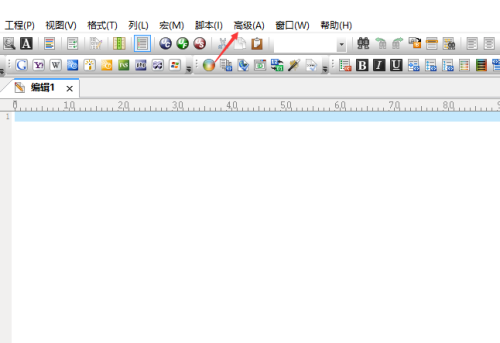
- UltraEdit怎么设置自动转换到DOS格式
- 时间:2025-10-13
-
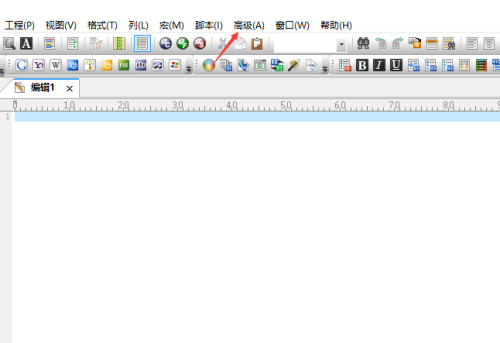
- UltraEdit怎么关闭整字匹配
- 时间:2025-10-13
-

- 三角洲行动简单又好听游戏网名
- 时间:2025-10-13
-

- 抖音定时发布怎么取消?发布作品正确方法是什么?
- 时间:2025-10-13
-

- 小红书怎么注册新的账号?它起号运营怎么做?
- 时间:2025-10-13
-

- 快手评论被删除的原因怎么查?评论被删除有哪些原因?
- 时间:2025-10-13
-

- 不让别人看抖音收藏的音乐怎么弄?收藏的音乐在哪里找到?
- 时间:2025-10-13
-

- 小红书企业号认证流程是什么?企业号认证的条件是什么?
- 时间:2025-10-13

